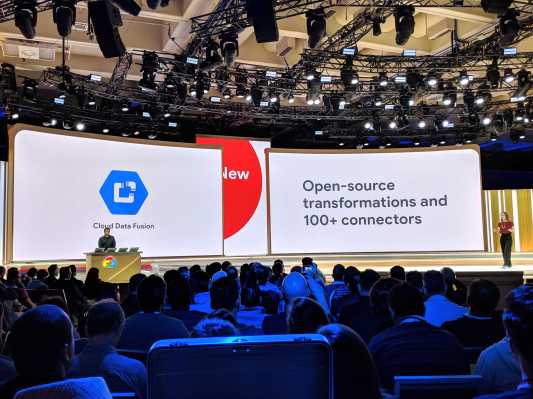Google is announcing several updates to its data analytics products at its Google Cloud Next developer conference today. The company wants to make it easier to move data to Google’s cloud, manipulate data and turn this data into insights.
First, Google wants to make it easier to access all your data from Google’s platform. The company is launching Cloud Data Fusion in beta. As the name suggests, this service lets you aggregate all your data sets in a single interface.
Even if your data is hosted on other cloud services, you can view it from the Cloud Data Fusion interface. You can then figure out which data set you’ll need to process in BigQuery for instance — BigQuery is Google’s cloud-based service for analyzing large amounts of data using SQL queries.
After selecting your data sets, you need to make sure BigQuery can ingest all this data. You might need to transfer some data to Google’s cloud.
Even if you already store data on Google Cloud Storage, chances are your data is spread out across multiple systems and data formats. For instance, you could already be uploading terabytes of raw data to Google’s servers, but it’s no use if you can’t process it with data in Salesforce or Workday.
The company already lets you transfer data automatically using the BigQuery Data Transfer Service. And Google says that this service now supports over 100 SaaS applications, including Salesforce, Marketo, Workday and Stripe.
This service already lets you transfer your data warehouse data. So if you want to switch from Amazon Redshift or Teradata, you can migrate everything.
Now that all your data is available, you need to visualize it. Google already lets you create interactive dashboards and reports in Google Data Studio. That service is powered by BigQuery BI engine. Google says that many complex queries now take less than a second to process.
Soon, Google will open up BigQuery BI Engine to other data visualization services, such as Looker and Tableau. BigQuery BI Engine will run behind the scene to process your data.
If you don’t want to learn SQL queries, chances are you use Microsoft Excel or Google Sheets to sort and process data. Google already lets you connect BigQuery with Google Sheets. The company goes one step further by creating a new type of infinite spreadsheet — connected sheets. Even if you have billions of rows of data, Google Sheets can now display your BigQuery-powered spreadsheet.
Last year, Google introduced BigQuery ML. That service lets customers build models on top of their data warehouse using SQL. Google is adding AutoML tables in beta. It lets you build machine learning models in a few clicks instead of a few lines of code.
Finally, Google is launching a metadata management service called Data Catalog. I’m sure telecom companies are going to love this. Customers will be able to restrict access to sensitive data assets using Google’s Cloud IAM interface.
And that’s it for Google’s data analytics news at Google Cloud Next.

